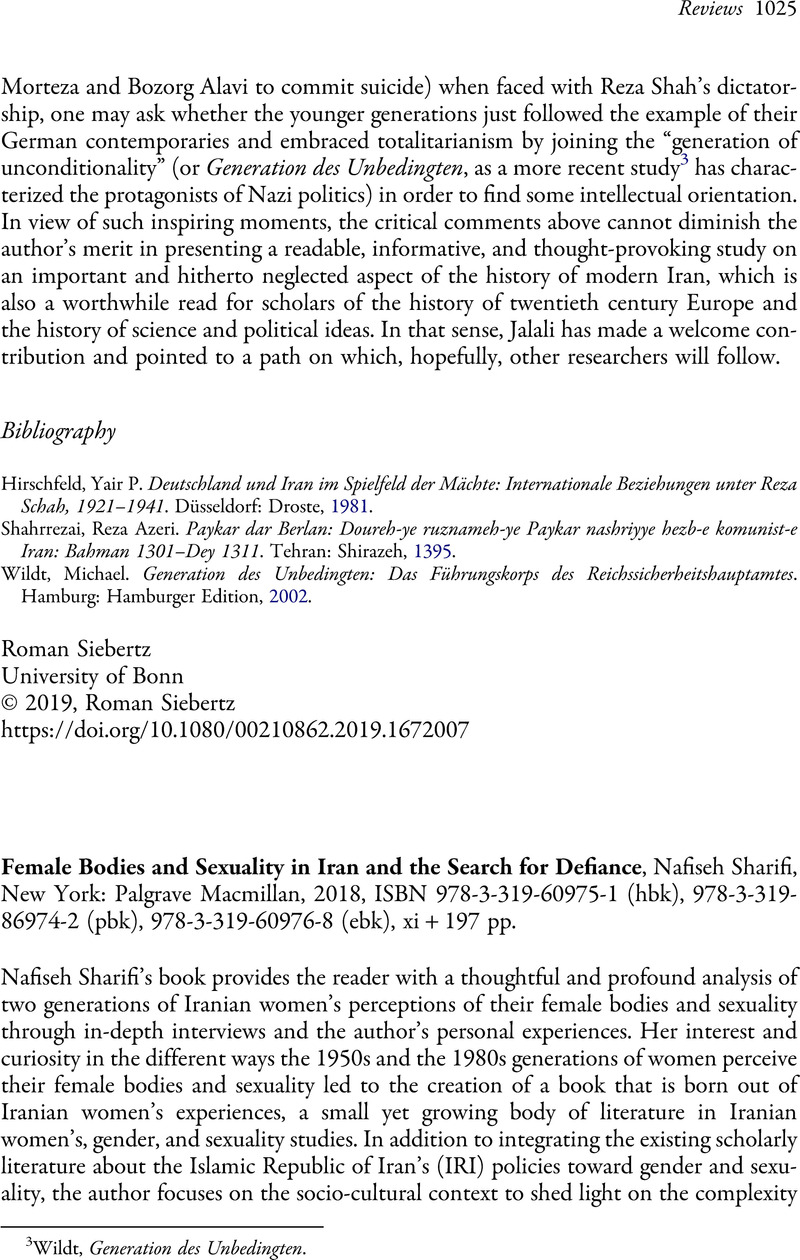Published online by Cambridge University Press: 12 January 2022

1 Mahmood, Saba, Politics of Piety: The Islamic Revival and the Feminist Subject. Princeton, NJ: Princeton University Press, 2005Google Scholar.
2 Tamkin literally means compliance. Sharifi defines the term as “women’s duty to satisfy their husbands’ sexual needs, [which] is part of women’s religious duty in marriage. Tamkin or sexual submission, which is also submission to God’s will, is defined according to legal marriage contracts as ‘a husband’s right and a wife’s duty’” (p. 47).
3 The Persian branch of the Deutsche Welle news agency published an article on 7 February 2019 about child marriages in Iran (https://p.dw.com/p/3Cuji). Based on data provided by the National Organization for Civil Registration of Iran, and Statistical Center of Iran, this news piece draws attention to the estimation of more than 38,000 cases of child marriages for girls under the age of fifteen, each year from 1391 to 1396 (2012 to 2018).